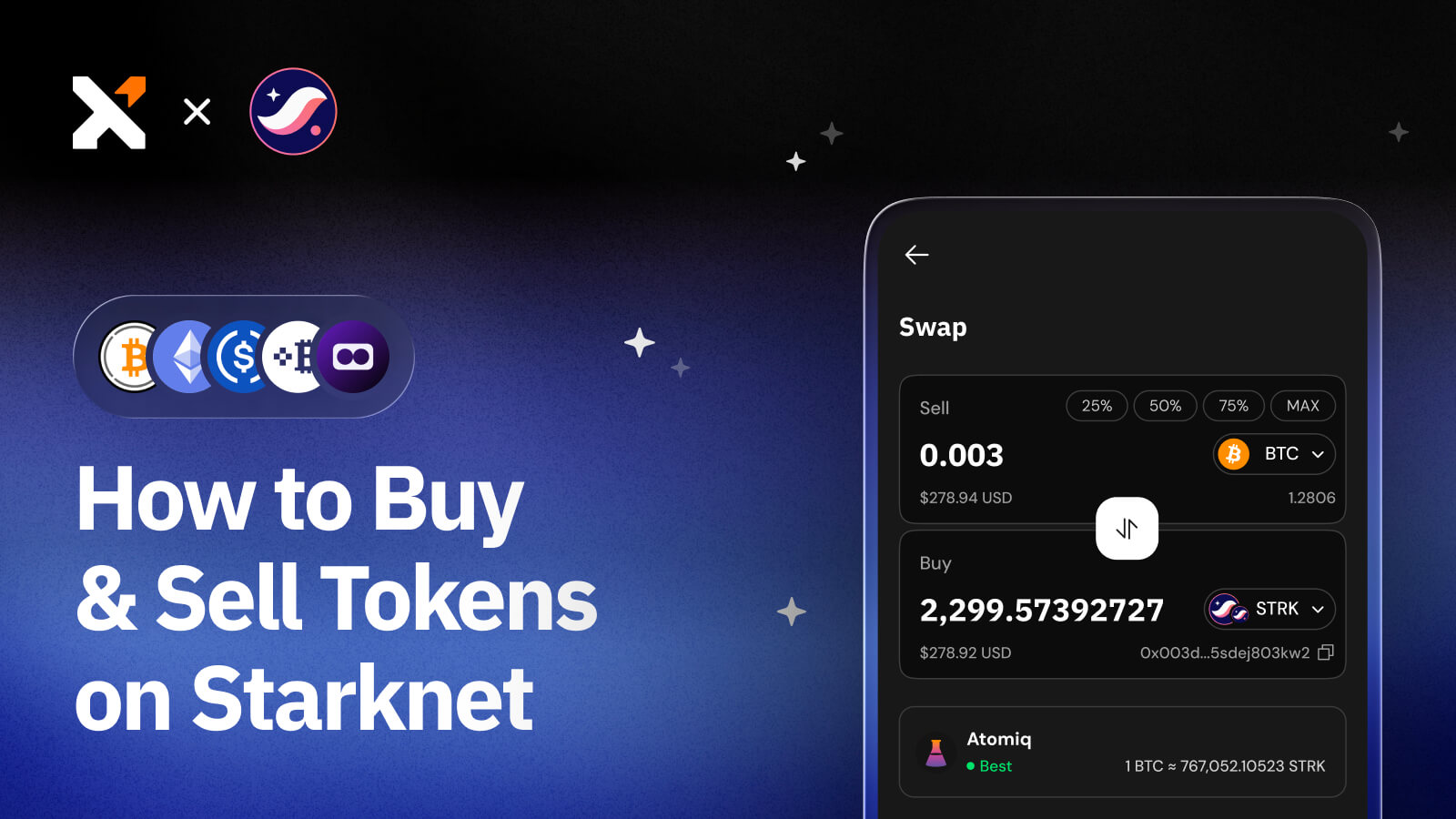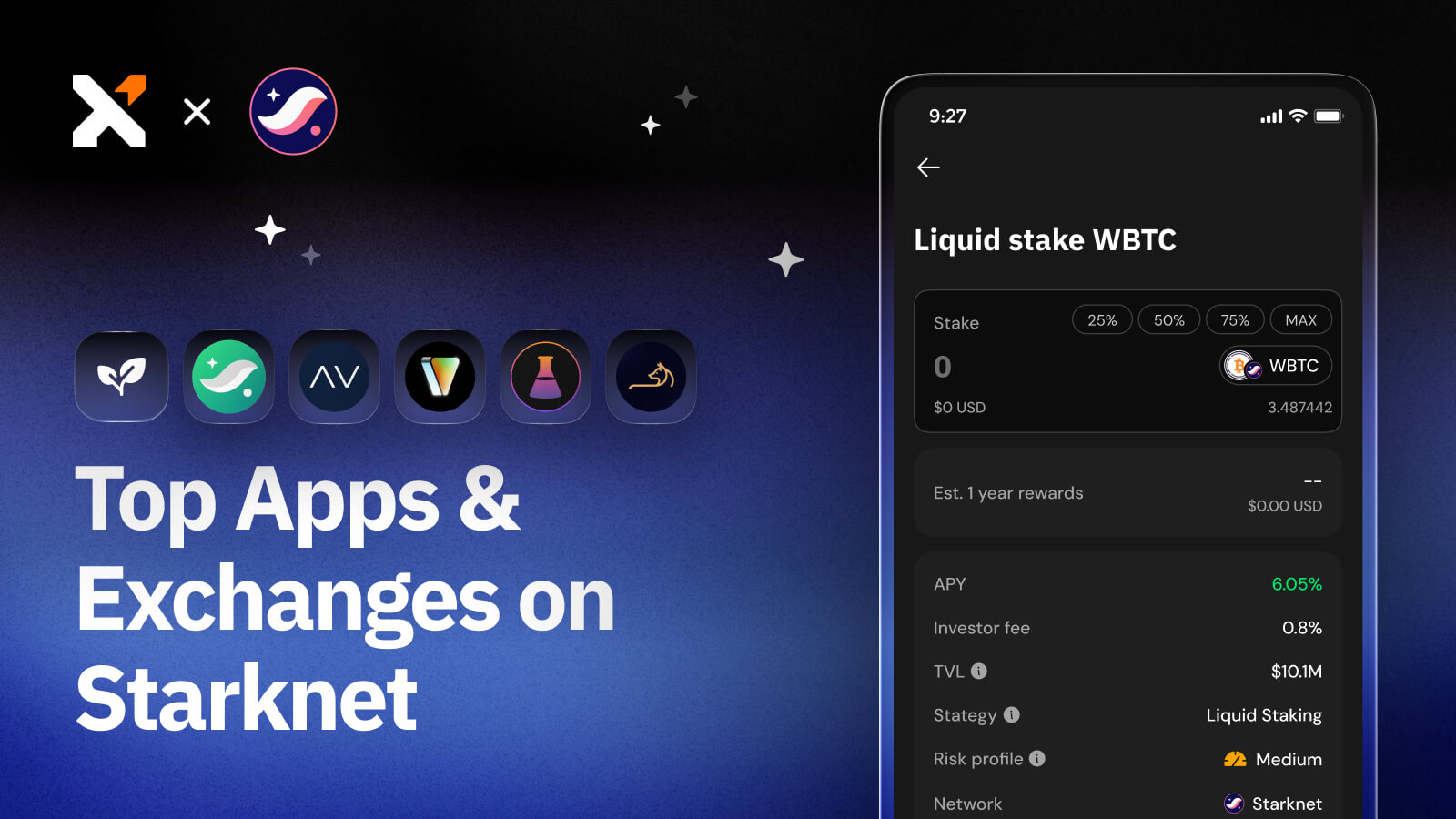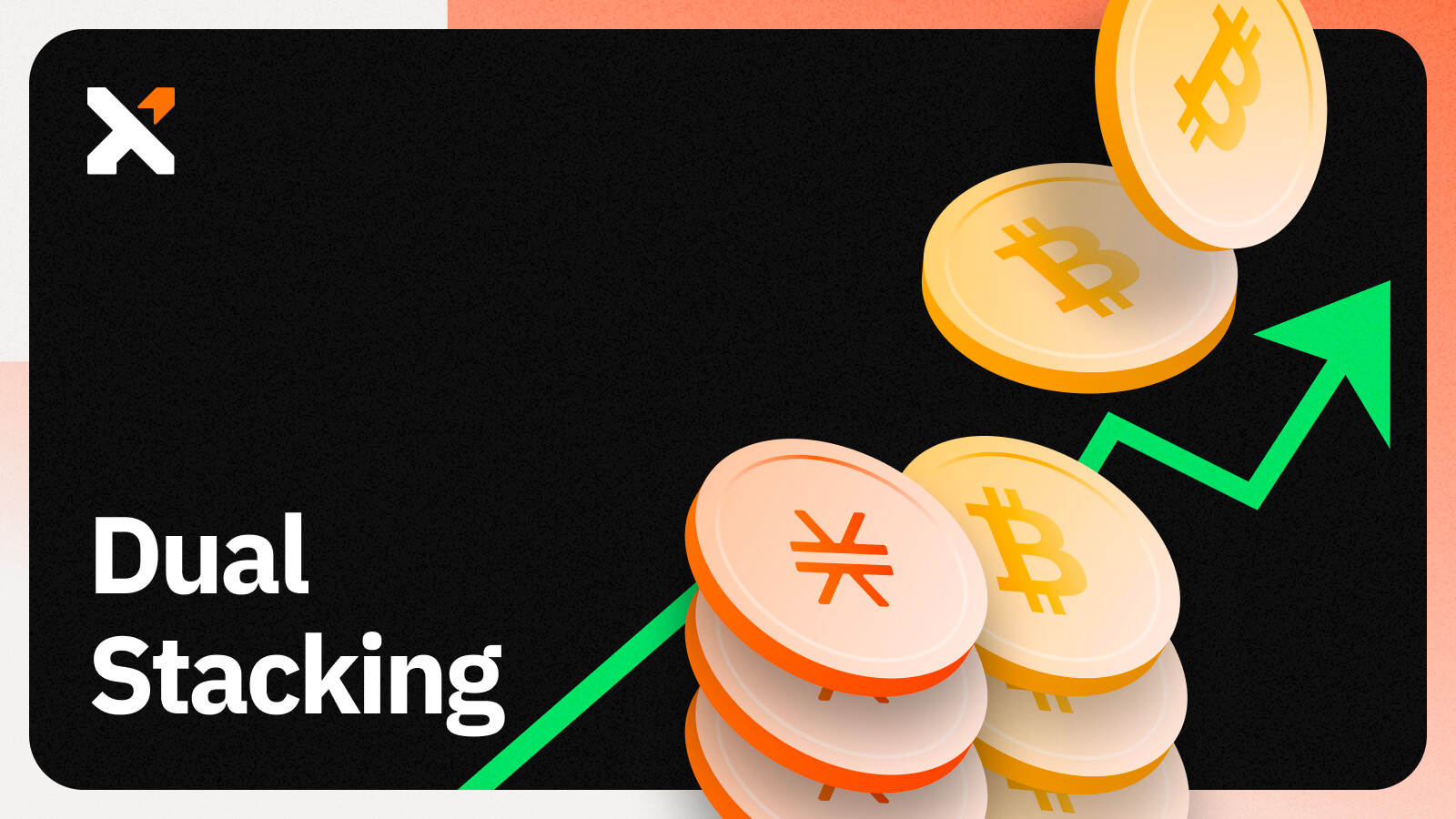What is sBTC? A Guide to Non-Custodial Native Bitcoin DeFi
Learn more about sBTC and discover how the pegged Bitcoin asset is powering Bitcoin-native decentralized finance.

Sign up for updates!
Stay tuned to our latest news and updates
.svg)
Ever heard of the “Bitcoin write problem”? Without getting too technical, it comes down to Bitcoin having limited programmability. That’s why we haven’t seen the types of DeFi applications on Bitcoin that we’ve seen on other chains. Yet for decentralized economies to function, users need the ability to do things like swap, borrow, and earn yield on their holdings.
This limited programmability has led to the emergence of blockchains like Ethereum offering more web3 capabilities and custodied ‘wrapped Bitcoin’ tokens to mirror the value of Bitcoin. However, the trade-off on Bitcoin’s security and reliance on centralized entities has resulted in numerous hacks, insolvencies, and billions lost.
A solution is needed to leverage Bitcoin beyond the base layer. In this article, we’ll explain why Web3 needs Bitcoin and introduce sBTC: a non-custodial pegged Bitcoin mechanism that will become the backbone of decentralized finance.
Why Bitcoin Web3?
The Bitcoin blockchain hasn’t experienced any exploits or hacks in its 15 years of use and maintains more than $1.2 trillion of network value–four times that of Ethereum. Web3 needs the decentralization, security, and durability that only Bitcoin can provide.
Decentralization
Bitcoin’s governance is in the hands of its holders, miners, node runners, and other network participants, and its rules are encoded in its protocol. This decentralization was demonstrated when the Bitcoin community resisted a change to the protocol that would have benefited miners and exchanges.
In contrast, Ethereum has a more centralized governance structure, with a charismatic co-founder and influential entities that can make changes to the Ethereum blockchain and monetary policy. This includes rolling back transactions that have already been settled. This flexibility allows for experimentation, but also undermines the security and durability of the blockchain necessary for building trust in a public economic system.
Security
Ethereum has transitioned from a Proof-of-Work (PoW) consensus mechanism to a Proof-of-Stake (PoS) mechanism to improve scalability. However, PoS has several fundamental issues that compromise security.
For example, the people holding the token are also the ones that validate the chain. This results in a concentration of decision-making power and financial rewards among the wealthiest currency holders, and the reliance on a measure of wealth that is determined within the system rather than external to it. As the largest holders will make decisions beneficial to themselves, this could lead to further centralization–the long-term implications of this are not yet known.
In contrast, Bitcoin's Proof-of-Work mechanism, which relies on external resources to validate blocks and rewards users for doing so honestly, offers a secure, tamper-proof, and decentralized settlement layer that is valuable for a range of applications.
Durability
Bitcoin is stable and reliable due to its comparatively long history and resistance to change. Ethereum is less reliable due to its experimental ethos and frequent rule changes. The interconnected nature of Ethereum's settlement and smart contract capabilities poses challenges for ensuring the security of the system. In contrast, Bitcoin's minimal and pure settlement layer is considered sacred and helps to ensure the stability of the system.
Bitcoin was designed to be a base layer for high-value settlements. Now it’s time to bring more powerful and expressive smart contracts required for DeFi applications with added layers.
The Stacks Bitcoin Layer
Layers provide scalable web3 solutions.
We’ve seen Ethereum layers lead to an entire ecosystem of decentralized apps being developed and attracting more capital and market value. Bringing layers to Bitcoin will also lead to innovative and sustained growth.
Currently, the #1 project for Bitcoin Web3 is the Stacks Bitcoin layer, which launched in January 2021. Stacks expands Bitcoin’s functionality, leveraging the security of Bitcoin as the anchor base layer without making any changes to Bitcoin itself to provide smart contract capabilities that enable the development of decentralized finance (DeFi) and other Web3 applications powered by Bitcoin.
Proof of Transfer (PoX)
Using a unique consensus mechanism called proof-of-transfer (PoX), Stacks can read the Bitcoin chain state and anchor its own blocks to Bitcoin’s proof-of-work (PoW). The Stacks layer forks when Bitcoin forks and has a built-in price oracle with BTC: Stacks miners spend BTC to mine STX, this spend rate is a great on-chain proxy for BTC to STX price.
Now advanced smart contracts required to leverage Bitcoin’s security, capital and network capabilities are possible without making any changes to Bitcoin itself.
Clarity Language
Stacks uses the Clarity smart contract language, which is decidable and human-readable. Unlike Ethereum’s Turing-complete language, which cannot be formally verified and could lead to more undiscovered vulnerabilities, Clarity gives developers a safe way to build complex smart contracts on Bitcoin.
Speed
Stacks will receive a speed upgrade (up to 5s block confirmation) to help scale Bitcoin once the Nakamoto upgrade is finalized. One potential unlock is lightning-fast payments on the Stacks layer benefitting from Bitcoin finality. Additional layers built on top called "subnets" could improve speed and scalability even further to bring lightning-fast payments with Bitcoin finality.
1/ Lightning fast #Bitcoin payments on @stacks. Yes you heard it. Let me explain in this thread 🧵⬇️
— kenliao.btc (@YukanL) November 15, 2022
sBTC: Bitcoin’s Web3 Holy Grail
Although Stacks has made significant progress, there’s still no way to move BTC in and out of smart contracts in a fully trustless manner. This has been Bitcoin’s evasive “holy grail” issue for almost a decade.
Enter sBTC: a non-custodial form of pegged Bitcoin with 100% Bitcoin finality. sBTC will soon exist on the Stacks Bitcoin layer, enabling smart contracts on Bitcoin. Get ready for DeFi, NFTs, and DAOs that run entirely on Bitcoin using Stacks as the invisible smart contract layer.
How Does sBTC Work?
sBTC functions by using a synthetic asset model on Stacks. To get sBTC, users have to swap their BTC for sBTC via a smart contract on the Stacks network without relying on centralized entities.
This is made possible by using the PoX consensus mechanism that connects to Bitcoin and facilitates sBTC’s novel trustless peg design. Moreover, since sBTC is a 1:1 Bitcoin-backed asset, sBTC holders can represent their BTC holdings as sBTC on the Stacks network.
The synthetic portrayal allows users to participate in DeFi activities, such as borrowing, lending, or trading, while still maintaining the ownership and benefits of their underlying bitcoin. Furthermore, users don’t pay any fees when converting between BTC and sBTC other than Bitcoin transaction fees.
sBTC is as close as you will get to native BTC if you require full programmability. It has all the benefits of Wrapped Bitcoin (wBTC) and none of its downsides. You no longer have to trust a custodian to back the wrapped token 1:1 with real Bitcoin as you would with wBTC.
Here’s a quick breakdown of the peg mechanism design, rooted in security, decentralization and usability:
Peg-in
First, users convert native BTC to sBTC on Stacks 1:1 by sending BTC to a native Bitcoin wallet. This threshold-signature wallet is controlled by a decentralized, open-membership group called “stackers” who lock up STX tokens in the Stacks’ PoX consensus mechanism. Stackers are economically incentivized through BTC rewards to process peg-ins/outs by the capital they lock up in stacking and the stacking rewards they receive.
The rewards give them strong economic incentives to engage in the peg-ins/outs without introducing additional peg fees. sBTC is then minted on the Stacks layer, while remaining secured by Bitcoin (as Stacks follows Bitcoin finality).

Source: sBTC Whitepaper
Peg-out
To peg-out and redeem native BTC, users send a request to the Stackers, which is processed in the same way as a BTC transaction.
Then, more than 70% of Stackers must collectively sign to burn the sBTC and programmatically send the corresponding native BTC back to the user’s BTC address. This process can take up to 24 hours.

Source: sBTC Whitepaper
sBTC Shares Bitcoin’s Ethos
The ethos of Bitcoin has always been championing self-custodial finance.
“Bitcoin, a purely peer-to-peer version of electronic cash would allow online payments to be sent directly from one party to another without going through a financial institution.” - Satoshi Nakamoto, 2008.
The sBTC white paper was written by the sBTC working group, which is open to the public, with contributions from Princeton computer scientists, developers of the Stacks layer, and anonymous contributors.
The failures of centralized entities like FTX, Genesis, and Voyager have cost users over $2T in 2022. These failings prove the importance of reaffirming the ethos of Bitcoin: to create a truly decentralized and transparent system.
sBTC builds on these foundational principles, solving the “Bitcoin write problem” to unlock a new era of Bitcoin applications that can rapidly accelerate the Bitcoin economy.
sBTC was designed to be both decentralized and secure, especially when moving BTC into another layer that supports smart contracts and decentralized applications (dApps).
The digital asset allows bitcoin holders to maintain ownership of their BTC holdings and benefit from Bitcoin’s security, all while getting access to the growing Bitcoin DeFi ecosystem.
Can Stackers Misbehave?
sBTC is trust-minimized and incentive-compatible: the same properties that secure Bitcoin itself. The dynamic group of stackers are rewarded BTC to process sBTC transactions.
Furthermore, the threshold wallet is based on a 70% threshold. This means that more than 70% of stackers would have to collude together in an economically irrational way to attempt an attack. If at least 30% of the stackers are honest, then no malicious peg-outs can happen.
Additionally, there is a recovery mode in which BTC rewards will be used to fulfill the peg-out request. Therefore, the native BTC will not get “stuck.” Furthermore, the process is fully transparent, so anyone can see on-chain how much BTC is in the threshold wallet, and how much sBTC is minted.
To ensure the system remains incentive-compatible, there’s a maximum “liveness” ratio of circulating sBTC at 50% of the total STX locked up in stacking. If the maximum ratio is reached, peg-ins will not be serviced until the ratio has been restored. This means even if the price of STX drops significantly against BTC, the incentive compatibility will be preserved.
What is the Stacks Nakamoto Upgrade?
The Stacks Nakamoto upgrade is a hard fork of the Stacks Bitcoin layer created to unlock the full potential of Bitcoin by improving the block creation speed, maximal extractable value (MEV) vulnerability, and transaction finality for Stacks.
- Faster block times: The Nakamoto upgrade decouples Stacks block production from Bitcoin block arrival times, allowing Stacks blocks to now be produced every 5 seconds.
- Finality: The Stacks network anchors its chain history to Bitcoin’s to ensure transactions can’t be reversed. Moreover, stackers watch over miner behavior on the network and make the final decision on whether to include a block in the chain or not.
- MEV protection: The upgrade ensures fair distribution of rewards and avoids Maximal Extractable Value (MEV) manipulation. MEV refers to the profits made by rearranging the order of transactions yet to be confirmed.
Through the update, Stacks will become a more efficient and scalable layer for DeFi and Web3 on Bitcoin.
How the Nakamoto Upgrade Paving the Way for sBTC
The Nakamoto upgrade introduces features to Stacks that clear the way for the launch of sBTC by allowing for the trustless transfer of BTC from Bitcoin to sBTC on Stacks through a peg in/peg out mechanism managed by a group of decentralized actors sBTC Signers.
sBTC signers are stackers who lock BTC that is sent to them by a user in multi-signature wallets to then mint sBTC on Stacks and send it to the users.
The Nakamoto upgrade also improves transaction speeds on the Stacks network, reducing settlement times to seconds from minutes. This makes it much faster and more efficient for sBTC to be deployed in DeFi protocols on Stacks.
Additionally, the upgrade introduces an improved PoX consensus model that ties Stack’s history to Bitcoin’s, such that at every new Bitcoin block, the state of the Stack network is also recorded, making it impossible to alter the network’s history without also altering Bitcoin’s.
What’s more, stackers will also have the ability to police miner behavior and decide whether to include a block to the chain, enhancing the Stacks network’s security.
By providing a fast and more versatile infrastructure, the Nakamoto upgrade gives everything Stacks it needs for sBTC to power DeFi and Web3 on the popular Bitcoin layer.
What’s Next for sBTC?
The introduction of sBTC will highlight that bitcoin is more than a store of value. sBTC has been built as a decentralized and secure digital asset that will expand the functionality of BTC.
In addition to launching on Stacks, sBTC will also come to Aptos Network and Solana to further enhance bitcoin’s role in the growing cross-chain DeFi ecosystem.
With sBTC, builders can unlock the full potential of bitcoin as a fully programmable asset, paving the way for the creation of Bitcoin-backed DeFi, non-fungible tokens (NFTs), and more.
Download Xverse today to manage your Bitcoin and Stacks assets with one wallet.
Share this article



.svg)




